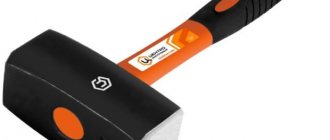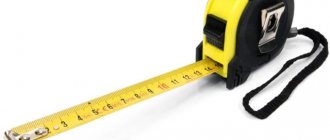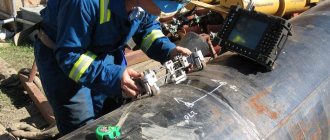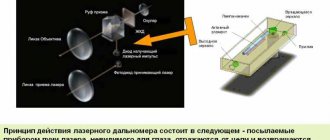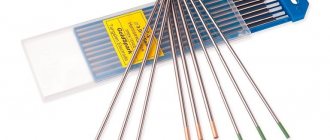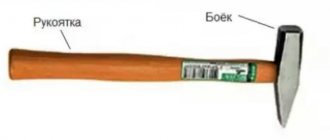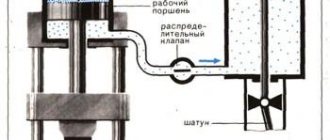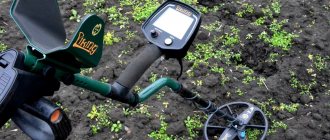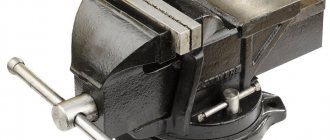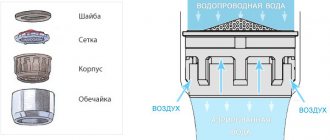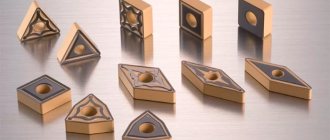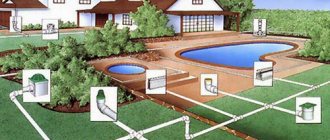Pneumatic jackhammer: technical characteristics
It is extremely important to consider the technical characteristics when choosing a fender. This instrument is divided (depending on the impact energy) into several groups:
- Equipment with an energy of 30 J is well suited for work in cramped conditions or at heights. This is facilitated by the low weight of the unit.
- A tool with an impact energy of 40 Joules is good for general construction work.
- 50 Joules and above are suitable for very hard material. Moreover, it is necessary to understand that the harder it is to process the surface, the greater the impact energy should be.
It’s worth saying a few more words about the fact that there is a large selection of attachments. In the standard version, a peak is installed, but if necessary, it can be replaced with a chisel or crowbar
It is extremely important that the pneumatic jackhammer, the technical characteristics of which we have already partially reviewed, be light in weight. Typically it ranges from 1.5 to 10 kg
Such equipment is convenient and easy to hold for a long time.
DEVICE AND OPERATION OF THE HAMMER
7.1. The hammer (Figure 1) is a piston pneumatic impact machine with valve air distribution, operating under the influence of compressed air. The hammer consists of an air distribution and impact mechanism, a handle with a starting device assembled in it, and a muffler casing.
7.2. The air distribution-shock mechanism consists of a barrel 2 with an axle box, a jumper, a hammer 13, a valve box 5, a valve 10, a pin 8, a seat 6 and a cover 7 pressed into the barrel.
The air distribution-percussion mechanism carries out: a) the intake of compressed air into the barrel cylinder, alternately into the forward and reverse stroke chambers of the striker and the release of exhaust air into the atmosphere; b) converts the energy of compressed air into mechanical work of a moving striker.
Figure 1. Pneumatic jackhammer MOP-2
7.3. The starting device consists of a handle 3, an intermediate link 1, a plug, a valve, a spring 11, a nipple 17, a union nut 18.
7.4. To prevent self-loosening of the threaded connection of the barrel and the link when the barrel hole is aligned with the slots of the intermediate link, a lock 19 is installed.
7.5. Valve cover 7 serves to press the air distribution unit to the end of the barrel.
7.6. The hose supplying air to the hammer is connected using nipple 17 and union nut 18.
7.7. To keep the lance from falling out, an end spring 16 is screwed onto the hammer barrel, and a rubber bushing 20 is installed on the tool between the barrel and the end spring.
Depending on the working conditions, a pike, spatula, hatchet or other tool with the required design of the working end can be used in the hammer. The shank dimensions are shown in Figure 2.
Figure 2. Tool shank for hammers MOP-2, MOP-3, MOP-4.
7.8. The hammer is started by pressing the handle. The pressing force when turning on must overcome the resistance of the spring and the valve, supported by compressed air. To start the hammer, it is necessary to apply a force of 68.6–97.6 N, depending on the air pressure. The hammer turns off automatically when the force is removed from the handle. The hammer handle is made of aluminum casting, the thermal conductivity of which is 0.4 W/(m-K) and has a surface roughness of 0.8 mm.
7.9. The hammer works as follows: when you press the handle, the valve moves down and opens a hole communicating with the annular chamber of the valve distribution. With the help of a valve distribution, firing pin and barrel, compressed air is supplied alternately to the forward and reverse chambers of the firing pin, thereby forcing it to perform reciprocating movements. Thus, the working process of the hammer is not fundamentally different from the working process of any hammers with valve distribution.
SECURITY MEASURES
3.1. It is forbidden to use the hammer as a crowbar while it is not switched off.
3.2. It is not allowed to point a hammer with a pike at yourself or other workers when testing or working with it.
3.3. Do not test the hammer “by hand” without an end spring.
3.4. During work, monitor the tightness of the threaded connections of the fitting with the industrial link, the cape of the nut with the fitting.
3.5. Exhaust air coming out of the exhaust vents should not come into contact with the worker's hands.
3.6. The air supply hose must be securely fastened to the nipple using a special clamp that protects the hose from being torn off.
3.7. Since a hammer is a source of harmful production factors, namely noise, vibration and dust, when working with them it is recommended to use personal protective equipment, namely:
- To protect the hearing organ, personal protective equipment must be used in accordance with GOST 12.4.051-78 “SSBT. Personal hearing protection. General technical conditions";
- for example, anti-noise headphones or earbuds;
- To dampen vibration, the hammers are designed with damping handle springs. Additionally, to protect hands from vibration, anti-vibration gloves can be used in accordance with GOST 12.4.002-74 “SSBT. Personal hand protection against vibration. General technical requirements";
- To protect the respiratory system in conditions of significant dust, respirators such as ShB-1 “Lepestok”, “Astra-2”, “Kama-200” or similar should be used.
The permissible total operating time with the hammer, taking into account noise and vibration levels, is 6 hours.
In this case, the operating mode should be as follows - 1 hour of work, 20 minutes of break.
Jackhammer Maintenance
Due to its simplicity of design and purpose, this is a fairly reliable and “indestructible” tool. Equipment repair specialists note that 70% of breakdowns are associated with overloads and dishonest attitude towards operating standards.
Only trained personnel are allowed to operate the equipment
Simple rules will help you avoid premature wear.
- Timely lubrication. Before installing the chisel (or other attachments), it is necessary to lubricate the shank with lithol, grease or other heavy lubricant. Reducing friction inside the chuck prevents overheating and wear on the jackhammer barrel.
- Compliance with operating hours. Every 35–40 minutes you need to take a break for 5–10 minutes. This is necessary so that the hammer cools down and the lubricant does not boil.
- Carrying out routine maintenance work. The manufacturer's recommendations must be included in this paragraph. After 100–150 hours of operation (depending on the model), the lubricant coating must be changed. Make sure that no oil leaks from the impact mechanism. If the leak is “chronic”, it is necessary to replace the gasket.
- Proper storage.
A dry room, with a positive temperature and relative air humidity of no more than 80% will be the optimal condition for the safety of all the mechanisms of the unit. Do not leave the hammer outdoors during rain or severe frosts. If you have a transport case, it must be packed after completion of work. Proper storage of the tool is the key to its safety
It must be remembered that a new tool received from the factory must be disassembled, cleaned of grease, and thoroughly rinsed all components in kerosene. Only after this is assembly done and the hammer is ready for work. The vast majority of manufacturers provide for a certain period of storage of the product and protect the instrument from corrosion by covering it with protective compounds that need to be removed.
Maintenance includes the following two types:
- shift, which is carried out every day before starting work;
- monthly, performed once a month in stationary workshops and involving complete disassembly, washing and lubrication.
Consumables that wear out constantly need to be replaced when they expire. You can sharpen the chisel and lance yourself. To do this, use a grinder or a stationary sharpening machine.
It is important to maintain the correct sharpening angle. It is forbidden to “edit” the shank with a sharpener - this leads to an increase in technological gaps with all the ensuing consequences
Electric jackhammer - how does the unit work?
In principle, jackhammers are not divided into household and professional, since the tool itself is professional. Fenders are grouped according to different criteria. For example, weight - light jackhammers include units that weigh no more than 5 kilograms. Such devices are universal and especially convenient when working in a horizontal position.
Most often, it is these devices that are purchased by repair teams, because with their help you can easily knock off old plaster on the walls, make a niche for a transformer, or get rid of a wall altogether by connecting two rooms into one. Along with the chippers, we recommend buying different chisels for the hammer drill - they will also fit the chipper. They can also solve more complex problems, although it will take much longer than when working with fenders weighing over 10 kilograms, which belong to the average category.
Heavy hammers weighing from 30 kilograms cope with the most difficult jobs, for example, dismantling concrete structures. True, it is most convenient to work with such units in a vertical position; in a horizontal position it is almost impossible, because the operator needs to cope not only with the weight of the tool, but also with vibration. Medium and heavy devices are highly specialized - weight, while being their advantage, is at the same time their main disadvantage.
Features of pneumatic hammers
The equipment refers to forging devices that perform all the previously listed operations, as well as twisting, cutting and shaping of workpieces.
They are controlled by hand lever or pedal. Structurally, the forging pneumatic hammer is complemented by an oil pump that lubricates the working cylinders (of which, by the way, there can be two). Conventionally, pneumatic hammers are divided into 2 groups:
- for artistic forging (models with a mass of falling parts up to 75 kg);
- for production (MPF - from 150 to 2000 kg).
The advantages of the equipment are energy intensity, sensitivity of adjustment of operating modes, ease of control, and durability. The disadvantage is the large size and weight, but the need for transportation rarely arises.
How to use the device, safety precautions
Working with a jackhammer has a number of features associated with the impact of negative factors on the operator.
- increased vibration during operation;
- increased level of dust in the chiselling area;
- high noise intensity, hazardous to health;
- an abundance of small particles of solid material flying at high speed from under the bit.
When working with a chipper, protective equipment is required
Therefore, safety requirements include the following points:
It is prohibited to carry out work without the use of personal safety equipment - earplugs or headphones, a respirator, safety glasses, as well as to work without gloves and a protective suit made of thick fabric. It is prohibited to use a jackhammer that is known to be faulty.
Before turning on, it is necessary to check the fastening of the chisel and the tightness of the bolts on the housing. During operation, following the safety rules, it is necessary to hold the bump stop only by the standard handles. It is unacceptable to work with one hand. If there is an additional holder, use it for its intended purpose.
The body position must be stable. It is prohibited to entrust the instrument to minor children and to leave it turned on unattended. It is unacceptable to point the tip of the chisel towards other people. After completing work, do not touch the metal part of the housing with bare hands. This may cause severe burns. It is unacceptable to use the tool for purposes other than its intended purpose, such as a crowbar or a shovel when the drive is turned off. The maximum operating period of a jackhammer is limited to 6 hours. Resumption of work is permissible only after a 1-hour break. When using the tool in the cold season outdoors, the lubricant needs to be warmed up. To do this, you need to turn on the device, and for 2-3 minutes. warm up at idle speed.
Following these simple rules will protect the user from injury and the bump stop from premature wear.
Often, when using a pneumatic jackhammer, some users increase the pressure of the compressor supplying compressed air to the tool. They proceed from the simple reasoning that the greater the pressure on the piston, the greater the impact force. This is true. But, unfortunately, for a very short time.
The compression level must correspond to the set nominal pressure of the unit
All rating parameters of the hammer are indicated taking into account the nominal pressure - this is, as a rule, 0.5–0.6 MPa. (or 5–6 atm.). When the pressure increases to 7–8 atmospheres, the load on the piston increases sharply (by 40–60%), and this leads to a halving of the service life of the parts. Therefore, the conclusion is simple - instead of “squeezing” unusual power out of a hammer, it is better to choose a tool with increased impact strength.
During operation of an electric jackhammer, sparks occur on the electric motor commutator. This must be remembered when performing work near combustible and flammable materials. In such a situation, it is safer to use pneumatically driven devices.
What is the difference between a jackhammer and a hammer drill?
Quite rightly, many may have noticed the similarity of an electric jackhammer with such a popular construction tool as a hammer drill. Many novice craftsmen still confuse chippers with barrel perforators, which have an almost identical design. To learn how to distinguish a rotary hammer from a jackhammer, you need to know the following:
- A rotary hammer, unlike a jackhammer, is considered a universal tool that can replace an impact hammer and a drill. For this purpose, the devices are equipped with a special mode switch. The design of almost every rotary hammer has three modes: drilling, chiselling and impact drilling. The jackhammer is intended for chiselling purposes only and does not have any drilling capabilities.
- A distinctive feature of a jackhammer from a rotary hammer is its performance. If the hammer can be operated for 8-10 hours a day, then the hammer drill in impact mode is not recommended to be used for more than 15-25%. Often many craftsmen neglect this feature, which leads to a significant reduction in the service life of the hammer drill. It is important to take this into account when choosing between a hammer drill and a jackhammer.
- The dimensions of an electric jackhammer are much larger, so in everyday life such tools, unlike rotary hammers, are used less frequently.
- The magnitude of the impact force is less for rotary hammers than for jackhammers. For rotary hammers, the impact force does not exceed 20 J, which is typical for barrel-type tools. The jackhammer has an extended range of impact power, the value of which is above 40 J.
Many people choose hammer drills, justifying this by the fact that such a tool is universal and can replace not only a jackhammer, but also a drill. However, the choice should be made not according to the capabilities of the tool, but according to the type and type of work planned for execution (since the service life of the tool depends on this).
This is interesting! When choosing the right tool, experts recommend taking into account such factors as how often you plan to use the tool in shock mode, and what types of materials you plan to work with.
Bosch jackhammer
Bosch jackhammer
For some, choosing a jackhammer is a very simple operation, since they are accustomed to trusting the famous Bosch brand. The specialists of this company recently released a fender, which is a tandem of high power and fairly low weight. The device has the following advantages:
- powerful motor that runs on electricity;
- the impact force is 23 Joules;
- weight is about 11 kilograms;
- The device operates for a fairly long period of time without stopping, even under high loads.
All characteristics are indicated by the manufacturer on the packaging, so choosing the right one will not be difficult.
Main characteristics of a pneumatic jackhammer
Pneumatic jackhammers are usually divided into several subcategories based on indicators such as impact energy. Each type of work requires its own energy. For example, if the impact energy of a tool is 30 J, it will be convenient to use it in suspended and constrained conditions. A tool with an energy of 40 J will be sufficient for general work. And so on in increasing order. If it is necessary to destroy particularly strong and rigid materials, it is best to use bumpers with a rating of 50 J or more.
Pneumatic devices have a fairly simple design. Their main working element is also the so-called. peak, thanks to which shock work is carried out. If necessary, this element is changed to a more suitable one, in accordance with the specific situation. For example, instead of a regular peak, you can install the previously mentioned chisel, crowbar, etc.
It is also important to pay attention to such an indicator as the weight of the pneumatic bump stop. Keep in mind that while working you will have to constantly hold the chipper in your hands, and if its weight is too large, you are unlikely to be able to complete the job efficiently in the shortest possible time. In view of this, pneumatic type bumpers, as a rule, have a low weight, on average from 1.5 to 10 kg
In view of this, pneumatic type bumpers, as a rule, have a low weight, on average from 1.5 to 10 kg.
The pneumatic type jackhammer is started in the following order. First, the bumper is connected to the compressor using a cord specially designed for this purpose. After turning on the compressor, compressed air is supplied and the battle begins.
Among the distinctive characteristics that must be taken into account when choosing a pneumatic jackhammer are:
- The number of blows performed in 1 minute.
- Air consumption for work.
- The pressure required to carry out the work.
- The strength of the blows.
General criteria and characteristics of jackhammers
Now you know the design features of electric and pneumatic jackhammers. To complete the picture, you need to familiarize yourself with the main characteristics of such tools, which will allow you to choose the most suitable model.
The most important characteristics of any bumper are the number of impacts and their strength. The performance of the fender directly depends on these parameters.
In the case of an electric model, it is necessary to take into account such a moment as engine power
Pay attention to the weight of the tool. This has already been mentioned before
If the jackhammer weighs too much, this will create certain difficulties during its operation. Everything very much depends on the nature of the work to be done. For example, if you need to get rid of old floor screed, a heavy jackhammer will come in handy. If you need to destroy the walls, the weight of the unit will work against you.
The manufacturer of the instrument should not be overlooked. No lengthy explanation is needed here. Everyone knows that there are responsible manufacturers, under whose name truly high-quality goods are produced, and there are companies engaged in the production of so-called. consumer goods. If you are planning to buy a jackhammer, it is better to choose a tool from a good brand. There are quite a few companies that are not yet very popular worldwide, but produce high-quality products.
Jackhammers are usually divided into professional and household. Professional-grade units have higher power and, as a rule, can cope with a larger list of tasks. Therefore, before purchasing, you must definitely plan the scope of the upcoming work so as not to overpay for unnecessary functions.
In addition to the basic characteristics discussed, jackhammers also have additional features that must also be taken into account. First, make sure that the jackhammer, if it is an electric model, is equipped with a button lock, which will ensure uninterrupted and long-term operation of the unit
This lock eliminates the need for the operator to constantly hold the jackhammer start button.
First, make sure that the jackhammer, if it is an electric model, is equipped with a button lock, which will ensure uninterrupted and long-term operation of the unit. This lock eliminates the need for the operator to constantly hold the jackhammer start button.
Secondly, an addition such as an idle frequency limiter will be useful. This feature improves the performance properties of the chipper and ensures longer tool life. The limiter works according to an extremely simple scheme: if the tool receives a less intense load, the engine speed is reduced automatically. Once the load increases again, the engine speed will also increase.
Thus, there is nothing complicated in the design of modern jackhammers. These are simple and functional tools that allow you to cope with a wide variety of repair, finishing and construction work. Knowing the main features of the device and the most important characteristics of a jackhammer, you can choose and buy the most suitable tool for you without any difficulty.
Types of jackhammers by type of drive used
A jackhammer is such a popular type of tool that it is produced in various versions depending on the type of drive devices used. There are the following main types:
- Electric jackhammer - This is the most popular type of tool, which is almost indispensable on construction sites. An important limitation to its use is the high humidity of the room, which increases the likelihood of receiving an electric shock. The only important drawback of electric fenders is their connection to the electrical network.
- Gasoline jackhammer has found its active use among workers who carry out work to prepare the surface for laying road surfaces. The important advantages of such units are: mobility, that is, lack of connection to the electrical network, as well as increased drive power, which allows you to perform a wide range of heavy work: from crushing concrete structures to compacting soil.
- Hydraulic - a professional type of tool, the operating principle of which is based on the use of oil pressure. The devices are compact, which is due to the absence of drive units in their design, but at the same time they are tied to special hydraulic stations. If the cost of a hydraulic breaker is lower than the price of electric and gasoline ones, then the purchase of specialized stations is problematic even for construction organizations and companies. These types of fenders are used in rooms with high humidity, where there is a strict ban on the use of electrical devices.
- Pneumatic breaker - another most common version of tools, which has found active use not only among builders, but also road workers, miners, etc. The hammers are compact and easy to operate. Impact actions are created using a special compressor, to which the bump stop is connected via a high-pressure hose. The disadvantage is the attachment to the compressor, but the products are characterized by such advantages as low cost, high efficiency, long service life and low maintenance costs.
These are the main types of jackhammers that are produced by tool manufacturers. Among all the listed types, electric and pneumatic models are especially popular. Gasoline units are more expensive, so they are less in demand than previous types. Hydraulically driven tools are used only in specialized facilities.
Design and principle of operation of a pneumatic hammer
According to its design features, such a tool falls into the category of piston pneumatic systems equipped with an air distributor with an impact operating principle. The pneumatic hammer is powered by the action of a stream of compressed air supplied by a compressor.
The main structural elements of the tool are:
- Lever.
- Shock absorber.
- Spring
- Valve
- Fixing ring
- Hull part
- Impact part or striker - air distribution impact mechanism
- Buffer spring
- Nozzle
- Nipple.
In general, pneumatic hammers consist of several main components:
- body-handle – includes the trigger, muffler and housing. The muffler is used to suppress aerodynamic noise that occurs when the air exhausted by the hammer is released;
- vibration protection of the handle - involves equipping the tool with a glass with two sealing bushings;
- anti-vibration protection against chisels – includes a spring-loaded bushing and manipulator;
- impact unit (launching device) – consists of a barrel, an air distribution system and a firing pin.
The impact system performs a number of basic functions:
- provides air supply to the tool with its further distribution between the striker stroke blocks and removal from the general equipment system after use;
- converts the energy of the used air into the mechanical work of the main working element - the impact unit.
Nozzle – selected depending on the type of task:
- chisel – destruction of reinforced concrete and metal structures;
- sharp peak (pencil) - processing frozen soil, brick or asphalt;
- scrap (cylinder) – brick walls, ice, concrete;
- shovel – suitable for removing ice or working with asphalt.
The pneumatic jackhammer can also be additionally equipped with:
- side handle, which allows you to correctly distribute the applied physical effort, thereby ensuring comfortable operation of the equipment;
- soft start - makes it possible to smoothly accelerate the engine, increasing its service life, and eliminates unnecessary overloads of the device;
- Impact frequency regulator - helps to adjust the hammer to work with materials with different levels of hardness, controlling the intensity of the tool.
The principle of operation of the hammer is as follows: pressure (compressed air) supplied through the hose acts on the handle, operates the tool and overcomes the resistance exerted by the valve spring. In this case, the valve moves and the openings of the air distribution system open. Air begins to alternately enter striker blocks of different types (either into the upper or lower part of the cylinder), as a result of which the impact system begins to make rapid movements of a reciprocating nature.
The main characteristics on which the effectiveness of any type of chipper depends are the force and number of impacts.
PREPARATION AND OPERATION PROCEDURE
8.1. Hammers received from a factory or warehouse must be disassembled after long-term storage, the parts cleaned of grease and thoroughly washed in kerosene and reassembled.
8.2. Check the freedom of movement of the hammer in the barrel by turning the hammer in a vertical plane.
8.3. Make sure the idler is screwed in tightly and secured with the stopper.
REMEMBER that when this connection is weakened and gaps appear in the air distribution device, the hammer parameters sharply deteriorate.
8.4. Make sure the handle moves freely.
8.5. Before starting work, attach the hammer hose to the filter and lubricant nozzle in the compressed air network. If there is no lubricant nozzle, inject lubricant through the nipple. During the operation of the hammer, periodically fill the hammer with lubricant to ensure constant lubrication of the rubbing parts. Lubricate the new hammer 3-4 times per shift during the first two weeks of use. A worn-out hammer should be lubricated at least twice a shift.
8.6. Clean the lance shank from dirt, put a rubber bushing on the lance, insert the lance into the hammer and secure it with an end spring, screwing it onto the barrel until it stops so that the lock fits into the corresponding groove in the barrel.
8.7. Blow the sleeve with compressed air and, making sure there is no dirt, attach it to the hammer nipple. Make sure that the hose is securely fastened and that the operating air pressure is not lower than 0.4 - 0.55 MPa.
8.8. Press down the hammer while working the lance.
8.9. When taking breaks from work, store the hammer so that dust, water, etc. do not get into it.
Instructions for use of the pneumatic jackhammer IP-4613MO and its modifications
Preparing a pneumatic hammer for work
- To prepare a pneumatic hammer for work:
- unscrew the end spring;
- remove plug 28 from the barrel;
- wipe the shank of the working tool and insert it into the end spring and then into the barrel;
- screw the end spring onto the barrel;
- screw the union nut onto the fitting until it stops;
- remove plug 22 from the nipple and pour 30 g of kerosene into it, after pressing the handle;
- select a hose of the required diameter, blow it out, put it on the nipple and secure it;
- connect the air supply hose to the line;
- open the valve and put the hammer to work, pressing the handle for 1-2 minutes;
- turn off the air supply from the line with the valve and disconnect the hose from the hammer by unscrewing the union nut from the fitting;
- fill the fitting with lubricant according to table 3;
- attach the hose to the hammer by screwing the union nut onto the fitting until it stops.
- Place the hammer with the working tool on the object being processed and put it to work.
- When the working tool is jammed in the material being destroyed, it is prohibited to apply forces to the hammer that would stretch the end spring. If the spring is stretched for this reason, the hammer will not be accepted for warranty repair.
What is a jackhammer, how does it work?
The device is a percussion tool designed to break and split rock sediment, concrete structures, asphalt, etc. The hammer is controlled manually by the operator; the direction of impact, frequency and duration of impact on the surface being treated are regulated. Since the force is transmitted to the working element (pike, blade, chisel, etc.) from the striker driven by an external energy source, the device belongs to the mechanized class of tools. The drive may be
- electrical;
- pneumatic;
- hydraulic;
- gasoline.
The number of beats varies from 15 to 45 Hz. (i.e. 15–45 working movements of the striker per second).
Mobile jackhammer in a mine tunnel
Bumper device
Despite the variety of types, their principle of operation is no different. The working part is a chisel, a peak or a slotting blade.
Various modifications of pneumatically driven jackhammers
Gasoline jackhammers and their varieties
The principle of operation of jackhammers, which are powered by internal combustion engines, is almost completely identical to electrical devices. Instead of an electric motor, an internal combustion engine is used to drive the piston. With its help, the air pressure acting on the firing pin increases in the chamber. The firing pin, in turn, hits the heel of the firing pin, transmitting a shock wave to the nozzle fixed in the tool chuck.
Gasoline jackhammers are classified into types according to the type of engine used. They come in two-stroke and four-stroke types. Jackhammers with two-stroke engines have such advantages as compact dimensions and low cost.
Design of a gasoline jackhammer
Units with four-stroke engines have a large reserve of power and performance. They weigh quite a lot, which allows them to be used not only for crushing material, but also for the purpose of compacting soil or bulk substances.
This is interesting! The main advantage of a jackhammer, which is powered by an internal combustion engine, is mobility. This eliminates the need to connect them to an electrical network or a compressor, as is typical for electric and pneumatic units.
